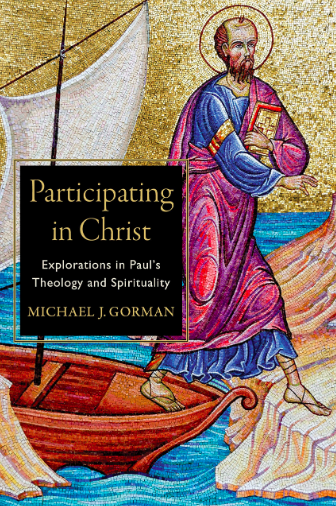Over at The Gospel Coalition Peter O’Brien, a wonderful man and scholar from Australia, has entered into an interview with Collin Hansen on the warning passages in Hebrews. I read the interview because I like the work of O’Brien and because I recently posted on this very issue.
In essence, the interview assumes or argues that there is a distinction between kinds of faith in the letter, namely, those with genuine saving faith and those without it. Those with genuine saving faith will persevere; those without won’t persevere. This is a common approach to Hebrews. Arminians agree that only those who persevere will be saved. Arminians think some who have faith will toss it away and will not be saved. Let it be clear that Peter and I agree on the necessity of perseverance, and it is a doctrine that most evangelicals are afraid to preach. But O’Brien and I disagree on a central element of the warning passages in Hebrews. The big issue dividing us is this:
Are there two kinds of faith? Or, are they people who have (real) faith, some of whom will persevere and some of whom won’t?
I contend O’Brien’s approach, which argues there are two kinds of faith — genuine and spurious — strains the very language of the letter to the Hebrews. I contend … well, read on.
First, if the sin to worry about is apostasy, and O’Brien calls it “irreversible apostasy,” how can a person with non-genuine (spurious) faith be warned about apostasy? What are they apostasizing from? (The only answer can be their non-genuine faith because that is all they have.) I contend this makes no sense. Big question: What does apostasy mean for the one who doesn’t really have genuine faith? (The sin of Hebrews is too violent to be anything other than something profoundly serious; I can’t see it being apostasy from less than real faith.)
Second, if the exhortation is to continue or persevere, how can a person with non-genuine faith be exhorted to continue? In what, their non-genuine faith? The only answer here is that the non-genuine faith person should be urged to repent and to believe or to enter deeper from a spurious and inadequate non-saving faith into a real, genuine saving faith. When this topic arises at the end of Hebrews 5 and the beginning of Hebrews 6 there’s no evidence the author thinks of these people of having spurious faith, but instead of having faith that needs perseverance. In other words, it’s just how the author says it: immaturity (or the “elementary”; 6:1) needs to move onto maturity. The elementary is not “spurious” but an immature version of the real thing. Grade school math is not spurious but immature, especially if the aim is mathematical physics.
The exhortation to continue then can only apply for O’Brien to the genuine saving-faith person (in which case the whole conditionality issue becomes hypothetical or only rhetorical and not real — an issue that needs a different discussion). In O’Brien’s sketch the warning passages are working with their eyes on two different faiths: genuine-faith people and non-genuine-faith people. I contend this is impossible to prove apart from one’s already-at-work Calvinistic assumptions. I see no evidence for two groups until the final day; at the moment of writing they are believers. The writer of Hebrews never suggests anyone has spurious faith; he worries those with faith will not persevere.
Third, it is not accurate to say genuine faith and spurious faith are clear in the book. That, again, is an imposed category: what is clear is that some believe and are saved and others shrink back and are damned. To say there are two kinds of faith requires a text where the author makes that kind of category clear. (And the word “faith” ought to be present with some kind of adjective that shows the author thinks some have a spurious faith.) What is present in Hebrews is an author who thinks his readers/listeners will persevere or not persevere. There are two kinds of people (in the end), not two kinds of faith, in Hebrews. Our question: What does “faith” mean for the non-genuine or “spurious”?
Fourth, read this carefully:
The descriptions of the audience in vv. 4-5 (“those who have once been enlightened, who have tasted the heavenly gift, who have shared in the Holy Spirit, who have tasted the goodness of the word of God and the powers of the coming age”) point to an initial experience of the gospel. The vivid agricultural imagery of Hebrews 6:7-8, which is integral to the warning of vv. 4-6 and clarifies its meaning, stands between the warning and the expression of confidence in vv. 9-12. It depicts two kinds of responses that can be made to the warning, not simply one, and thus fills out and completes the picture by including both those who do not fall away and those who commit apostasy.
The effects of the rain on each piece of land differ dramatically: in the case of one, the presence of fruitful crops at the end time harvest is evidence of those who had a genuine experience of salvation (vv. 7, 9). But the land that has been well watered and nurtured, and produces only “thorns and thistles” shows that it is worthless, and does not stand the test at the final judgment (vv. 6, 8). The faith of those represented was only transitory (cf.Heb. 10:38-39; Heb. 12:25). They were never true believers, whatever signs of life they may have shown initially.
Notice that the author says the audience has an “initial experience of the gospel” and then later says they “were never true believers.” I agree with the first but the last category is imposed from without on the basis of other conclusions, namely that if one does not have perseverance one never really had genuine faith. This is the QED, and it doesn’t work to assume this stance in order to explain one’s view. There are two kinds of people, not two kinds of faith. There is one kind of faith: faith. Some will persevere and some won’t. One faith, one kept and one discarded.
Peter O’Brien says this a different way later:
Given Hebrews’s distinction between authentic faith as that which perseveres to the end, and spurious faith that may initially show some signs of life but does not endure, the person who commits apostasy is not an authentic Christian and never was one, whatever their first responses to the gospel may have been.
Again, the authentic vs. spurious is a way of framing the problem. I prefer it to frame it as “faith” that perseveres and to salvation vs. faith that doesn’t persevere and that leads to judgment. The use of “spurious” suggests it wasn’t the real thing from the beginning, which I think is his point but which is precisely the point that needs to be proven. And this is clear in that O’Brien says in this paragraph “and never was one.” Now that’s the point that has to be shown, and the only way to show this is to assume that genuine faith perseveres vs. ungenuine faith that does not persevere, when the author seems to be using this set of categories: faith that perseveres saves and faith that doesn’t persevere doesn’t save. The issue is whether the “faith” is real in each case; I think so. He needs to show that some people do not really have genuine faith. What does it mean to have “initial” faith or an “initial experience of the gospel” in such terms if it doesn’t mean to trust in Christ?
Again, in Hebrews 5 to 6 the author brings this up. The initial experience is not spurious, but real; it just needs to move to the level of perseverance and not move back to the world of apostasy.
Fifth, Peter gets very close here to being a classical Arminian. Here are his words:
Since this offense constitutes a total renunciation of everything that is distinctively Christian and which the person had previously professed, it is not the sin of the outsider or the one who is on the edge of church life.
Not an outsider and not one who is on the edge of church life? Where, then, is this person? Do they believe or not? Does this language work for the wilderness generation or for Esau? I say No, what say you?















